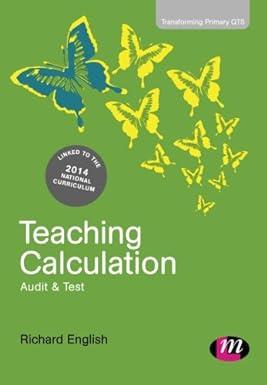Question
PART 1 Materiality W&S Partners commenced planning the Cloud 9 audit by gaining an understanding of the clients structure and its business environment. A major
PART 1 Materiality
W&S Partners commenced planning the Cloud 9 audit by gaining an understanding of the clients
structure and its business environment. A major task is to consider the concept of materiality as
it applies to the client. The auditor will design procedures in order to identify and correct errors or
irregularities that would have a material effect on the financial report and affect the decision making
of the users of the financial report. Materiality is used in determining audit procedures and sample
selections, and evaluating differences from client records to audit results. It is the maximum amount
of misstatement, individually or in aggregate, that can be accepted in the financial report. In selecting
the base figure to be used to calculate materiality, an auditor should consider the key drivers of the
business. They should ask, What are the end users (that is, shareholders, banks etc.) of the accounts
going to be looking at? For example, will shareholders be interested in profit figures that can be used
to pay dividends and increase share price?
W&S Partners audit methodology dictates that one planning materiality (PM) amount is to
be used for the financial report as a whole (that is, rather than separate PMs for the income
statement and the balance sheet). Further, only one basis should be selected a blended
approach or average should not be used. The basis selected is the one determined to be the key
driver of the business.
W&S Partners use the following percentages as starting points for the various bases:
Base Threshold (%)
Profit before tax 5
Turnover 2
Gross profit 0.5
Total assets 1
Equity
These starting points can be increased or decreased by taking into account qualitative client factors,
which could be:
t the nature of the clients business and industry (for example, rapidly changing, either through growth
or downsizing, or an unstable environment)
t if the client is a listed entity (or subsidiary of) subject to regulations
t the knowledge of or high risk of fraud.
Typically, profit before tax is used; however, it cannot be used if reporting a loss for the year, if
profitability is impacted significantly by one off adjustments or transactions, or if the users of the
financial report are not basing their investment (or other) decisions on a profit basis.
When calculating PM based on interim figures, it may be necessary to annualise the results. This
allows the auditor to plan the audit properly based on an approximate projected year-end balance.
Then, at year-end, the figure is adjusted, if necessary, to reflect the actual results.
Required
Using the 30 September 2016 trial balance (in the appendix to this text), calculate planning materiality
and include the justification for the basis that you have used for your calculation.
When you are answering the question, you should refer to the information presented for Cloud 9
in the appendix to this text and in the current and earlier chapters. You should also consider your
answers to the case study questions in earlier chapters.
Step by Step Solution
There are 3 Steps involved in it
Step: 1

Get Instant Access to Expert-Tailored Solutions
See step-by-step solutions with expert insights and AI powered tools for academic success
Step: 2

Step: 3

Ace Your Homework with AI
Get the answers you need in no time with our AI-driven, step-by-step assistance
Get Started


